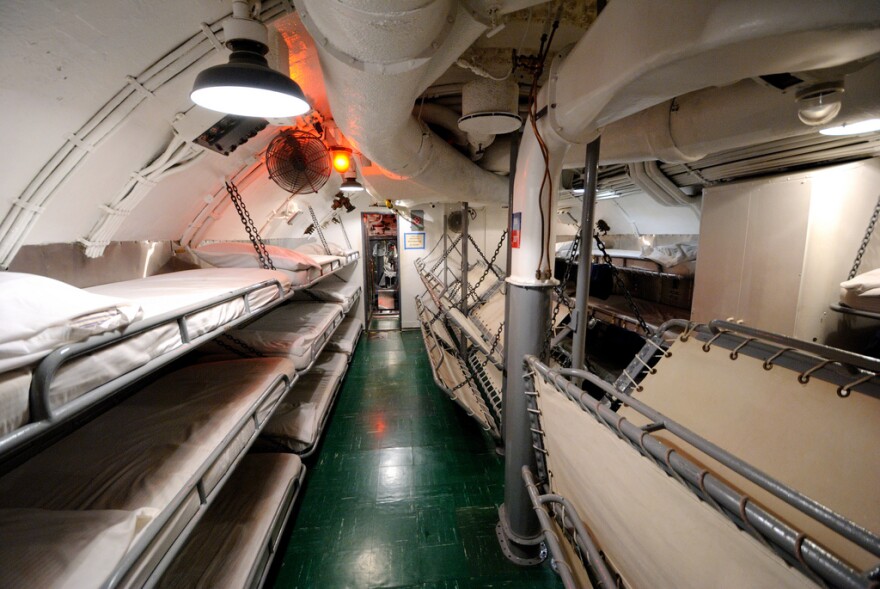The U.S. Navy is allowing sailors on submarinesto work on a 24-hour schedule, based on research from the Navy lab at Groton, but civilians who don't work normal hours should pay attention, too.
It is almost, in many ways, like a laboratory for studying circadian rhythm disorders.
Klar Yaggi
For decades, the Navy has been using an 18-hour work schedule on submarines. That means a new day comes every 18 hours, not every 24 hours.
That's not the best schedule for humans, explained Nita Shattuck, an associate professor at the Naval Postgraduate School. Although she didn't do this study, she has studied sleep deprivation in the Navy for the past few years.
"You're jetlagging someone six hours each day, flying from the East Coast to Europe every day."

This change in the Navy's schedules could have wider implications, particularly for people who don't work and sleep during usual night time hours -- even if they just wake up early in the morning, say at 4:00 a.m., to get to work.
Shattuck said people who work on submarines are an ideal sample for studying sleep deprivation: sailors are in peak physical condition, highly disciplined and they work very hard under water without seeing the sun.
Klar Yaggi, an associate professor who studies sleep at the Yale school of Medicine, agreed, saying, "It is almost, in many ways, like a laboratory for studying circadian rhythm disorders."
A lot of sleep research has focused on shift workers, like people who work in hospital emergency rooms, truck drivers and factory workers. Basically humans have an internal clock and it's much better to sleep at night and be awake during the day, and to get enough hours of sleep.
But someone has to work those late night shifts, and Nancy Redeker, a professor of nursing at Yale, said there are strategies people can use to limit the damage. They should make their albeit abnormal patterns as regular as possible instead of changing schedules too often. When they can sleep, they should try to get the best sleep possible by being in a quiet room, with little light or even taking sleep pills. Redeker said some shift workers who work during the night even wear sunglasses on the way home so the bright sunlight doesn't remind them it's day time.

Despite all this, sleep medicine is still a relatively young field with a lot to study, said Yaggi.
"Some of this may also be very much genetically controlled, that there are individuals who are more predisposed to being night owls," Yaggi said. "[It's] much more easy for them to stay up late at night as opposed to what we would call a morning lark."
Being out of sync with our circadian rhythms can be linked to diabetes, heart disease and other conditions; other biological processes, like the release of stress and growth hormones are also linked to circadian rhythms, but researchers are still looking at long term health effects in detail. One existing study already points to long term consequences: it found that shift workers sleep worse than day workers, even after they retired.




